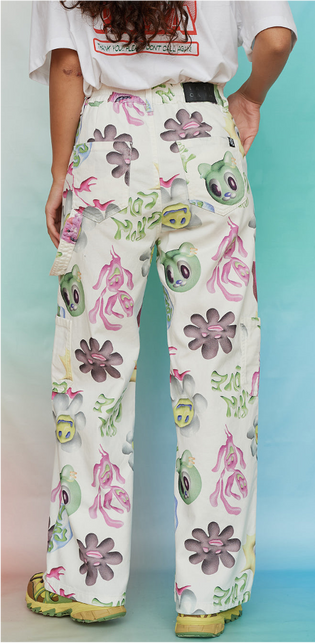top of page
Reactive Digital Printing
Definition:
Reactive digital printing is a textile printing method that combines reactive dyes with digital inkjet technology. It is primarily used on natural fibers such as cotton, silk, and linen. In this method, dyes form a chemical bond with the fabric, resulting in vibrant and durable colors.
Printing Process:
1. Pre-treatment:
- The fabric is coated with chemicals such as sodium alginate to improve dye absorption.
- This process ensures that the dye penetrates the fabric better and produces more vibrant colors.
- Pre-treatment also enhances the fabric's resistance to washing and friction.
2. Printing:
- Reactive dyes are applied to the fabric using digital inkjet printers.
- This method allows for high-resolution and detailed patterns.
- Digital technology reduces waste compared to traditional methods and offers cost advantages for small-scale production.
3. Steaming:
- After printing, the fabric is passed through a steamer.
- Steaming (typically 8-15 minutes) activates the chemical bond between the dye and the fabric.
- This step is critical for ensuring color durability and vibrancy.
4. Washing:
- After steaming, the fabric is washed to remove excess dye and chemicals.
- This process enhances the fabric's softness and prevents color fading.
- The washing stage can be water-intensive, but closed-loop systems can help reduce water consumption.
Advantages:
• Vibrant and Durable Colors:* Reactive dyes form a chemical bond with the fabric, ensuring excellent wash and light fastness.
• High Detail and Flexibility:* Digital technology enables intricate designs and photorealistic prints.
• Eco-Friendly:* Water-based dyes are used, and fewer chemical wastes are produced compared to traditional methods.
• Small-Scale Production:* Ideal for custom designs, prototypes, and personalized products.
Challenges:
• Complex Process:* Multiple steps, including pre-treatment, steaming, and washing, can increase production time and costs.
• Water Consumption:* The washing stage requires significant water, although modern systems with water recycling can mitigate this issue.
• Material Limitations:* Best results are achieved on natural fibers; it is less effective on synthetic materials like polyester.
• Color Management:* Achieving consistent colors requires expertise due to variations in fabric absorption and dye behavior.
Applications:
• Fashion: High-quality apparel, scarves, and custom-designed garments.
• Home Textiles:Curtains, upholstery, and bed linens.
• Sustainable Products:Organic cotton items and eco-friendly brands.
Environmental Impact:
• Traditional reactive printing methods can have environmental impacts due to high water consumption and chemical waste.
• However, modern digital printing systems (e.g., Kornit, Epson) reduce water usage and improve waste management.
• Innovations such as low-impact dyes and water-efficient washing systems are enhancing the sustainability of reactive digital printing.
Comparison with Other Printing Methods:
• Sublimation Printing: Ideal for synthetic fabrics; does not require washing but is less effective on natural fibers.
• Pigment Printing: Offers a simpler process (no steaming required) but produces less vibrant colors and has lower wash fastness.
• Acid Dyes:Used for protein fibers like wool and silk but require different chemical processes.
Future Trends:
• Automation: Automating pre-treatment and washing stages will speed up production and reduce costs.
• Sustainable Solutions: Water-efficient systems, biodegradable dyes, and recycled water usage will become more widespread.
• Customization:The demand for on-demand, small-scale production will grow, driven by fast fashion and e-commerce.
Conclusion:
Reactive digital printing combines the advantages of traditional textile printing with modern digital technology. It offers high-quality, durable, and eco-friendly products. Particularly in the fashion and home textile industries, it stands out as a sustainable and flexible production solution. With ongoing technological advancements, the environmental impact of this method is expected to decrease, further expanding its applications.


bottom of page























